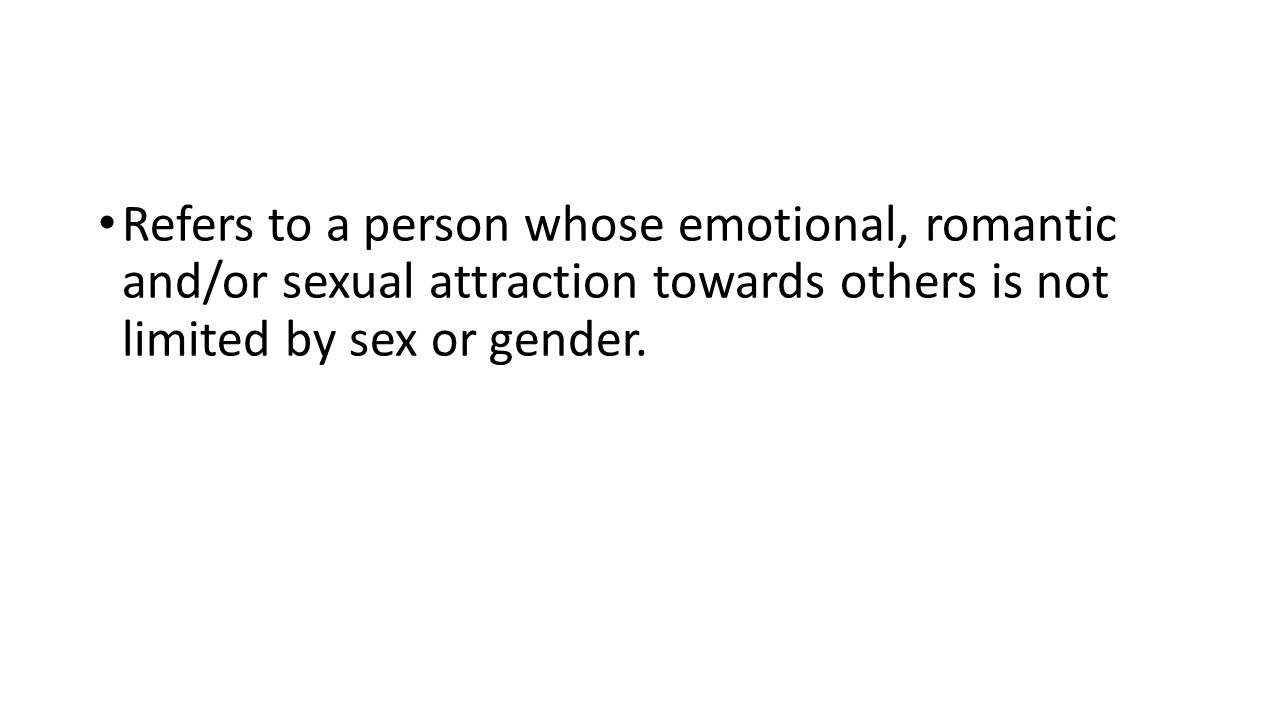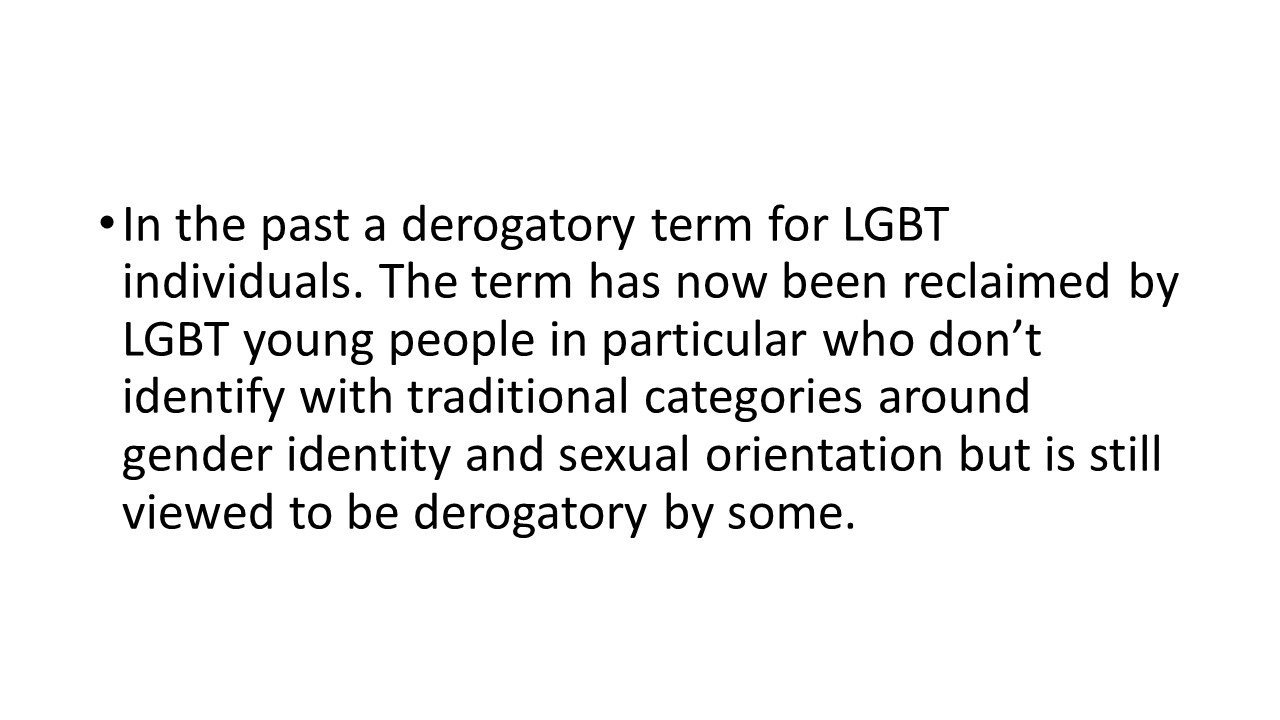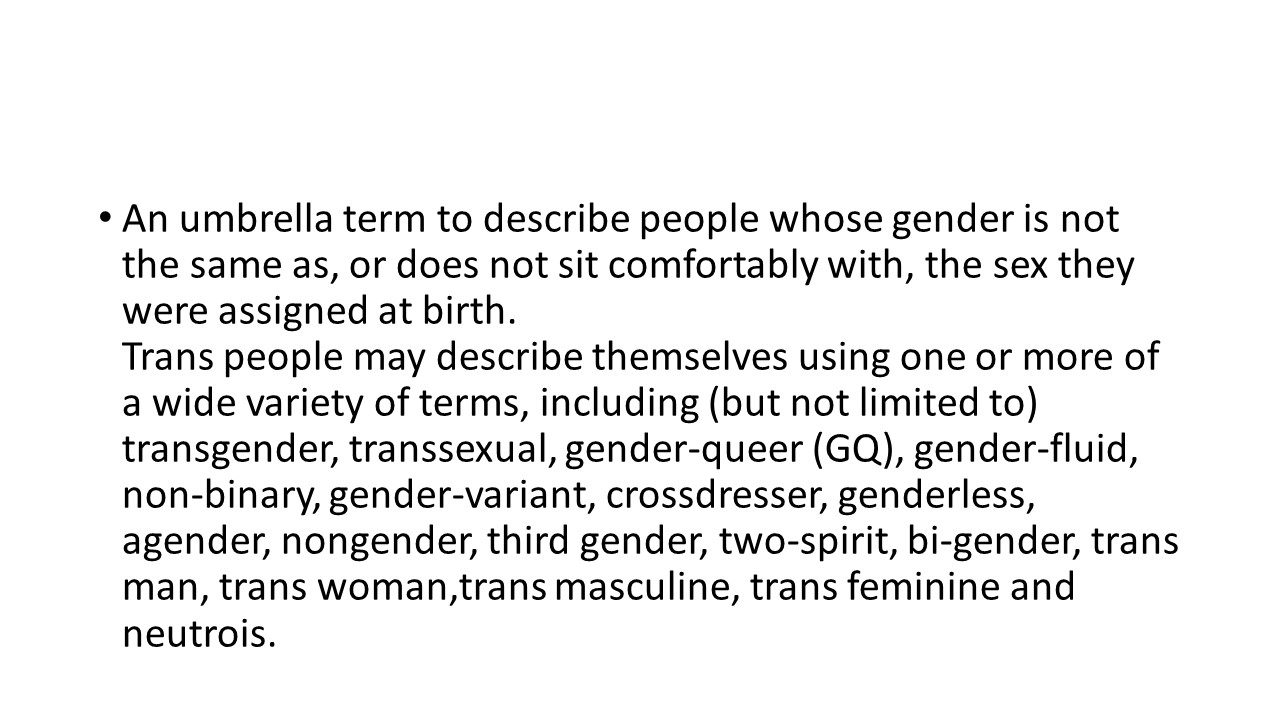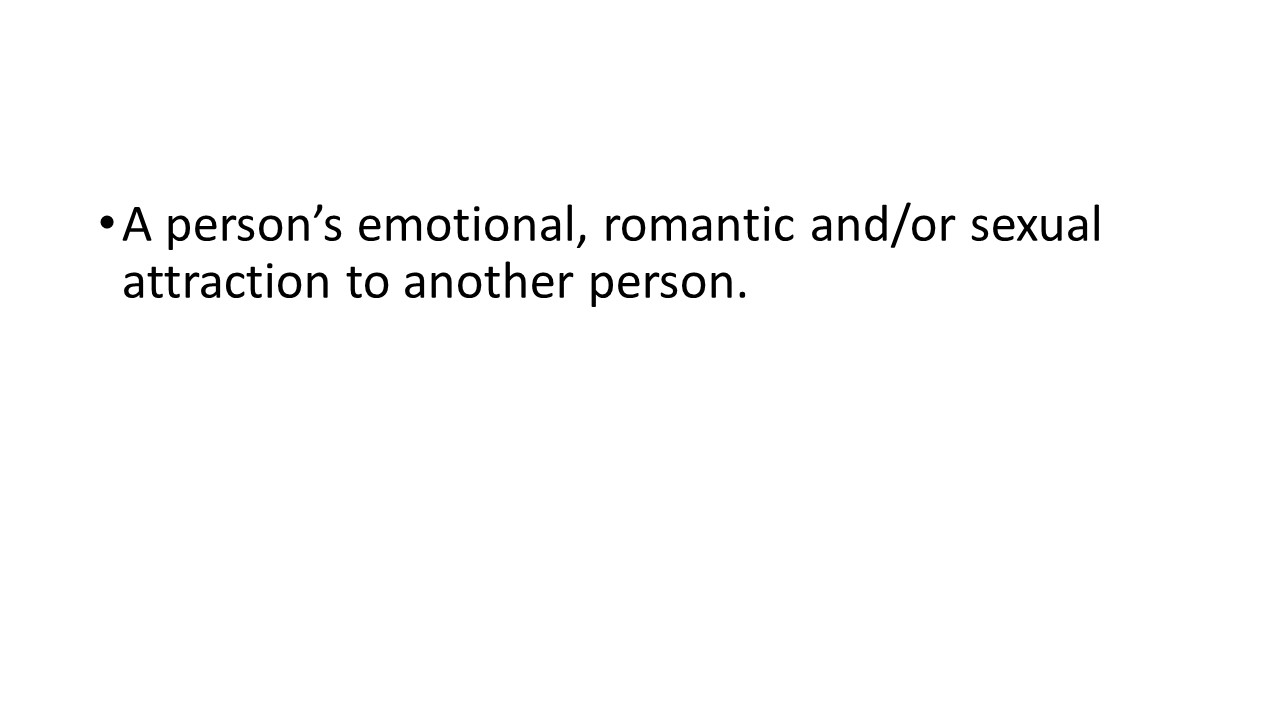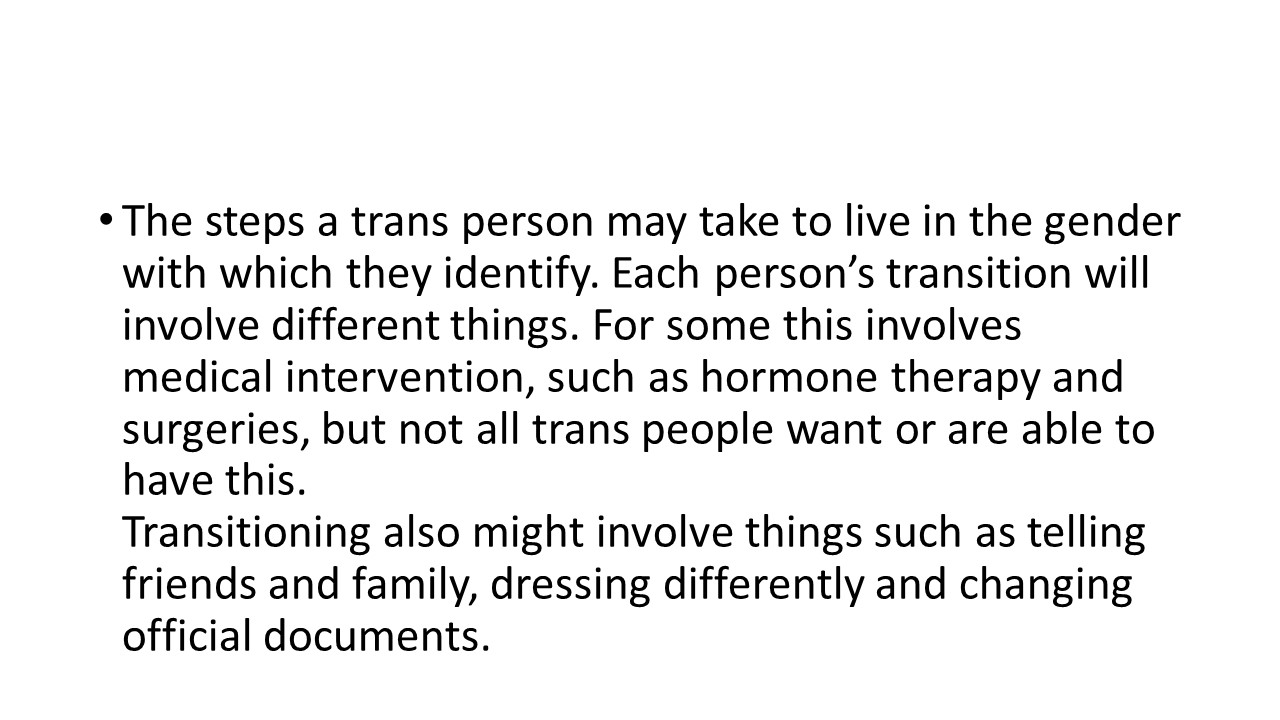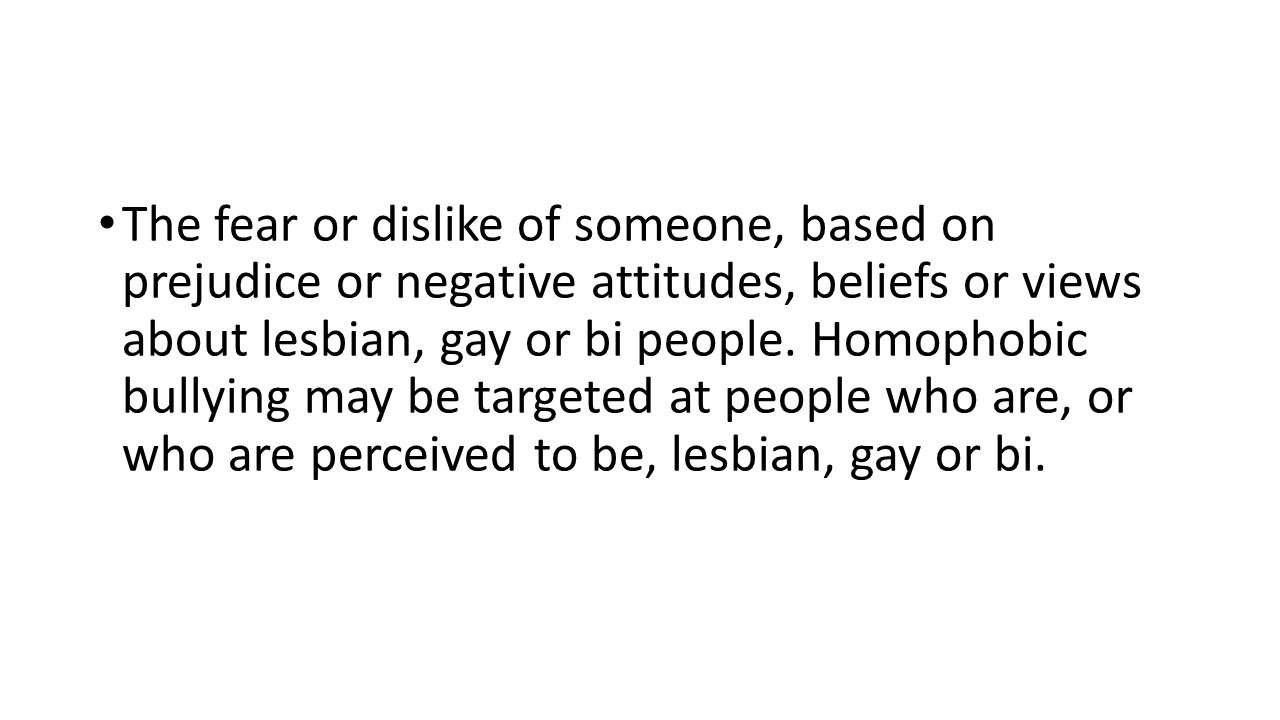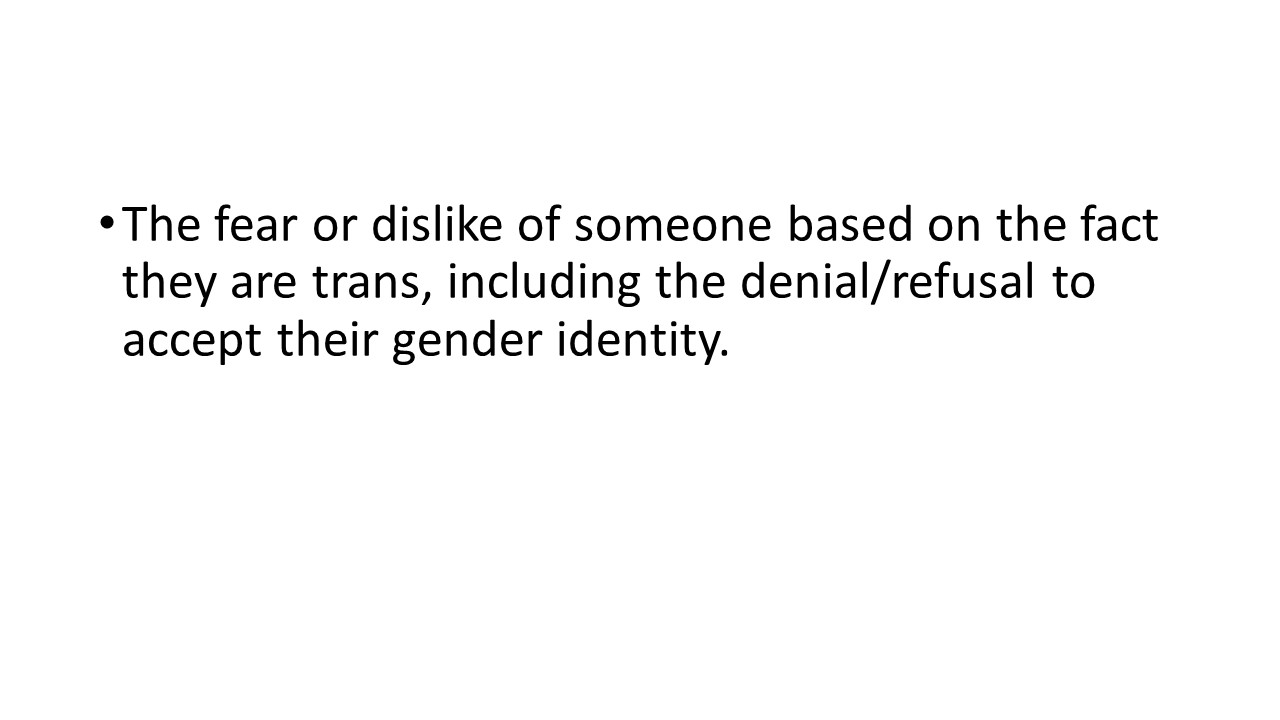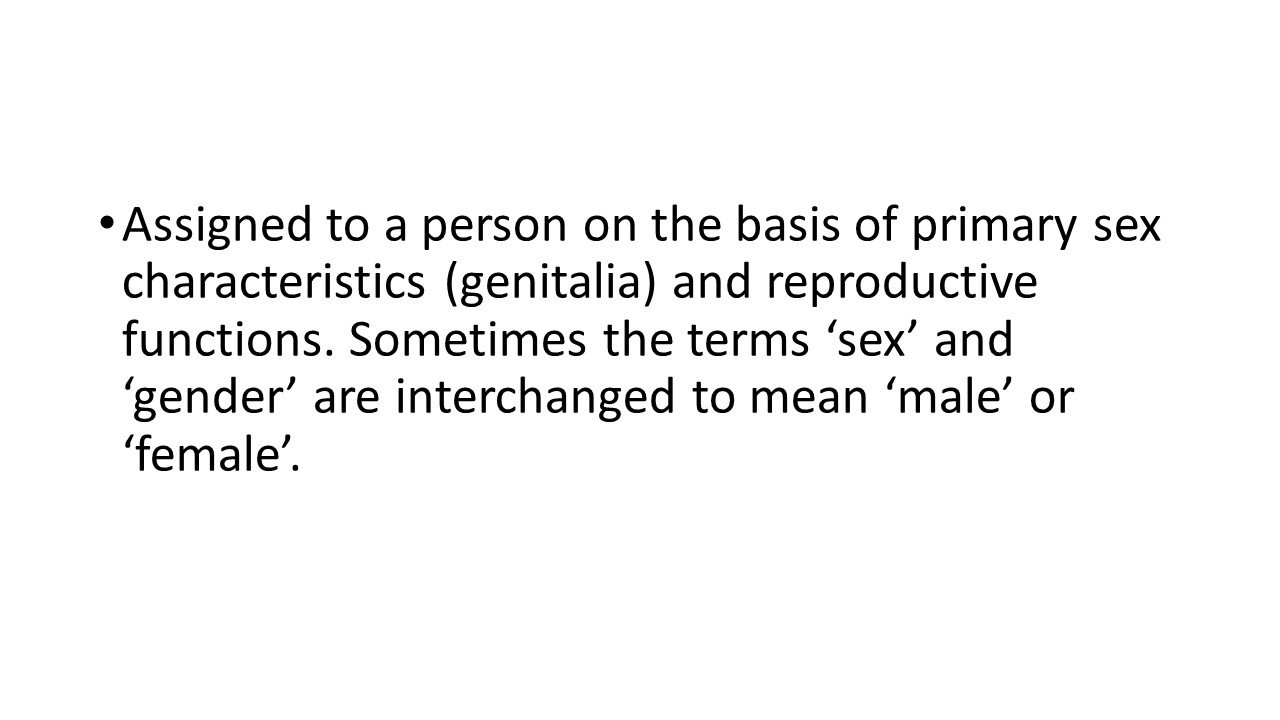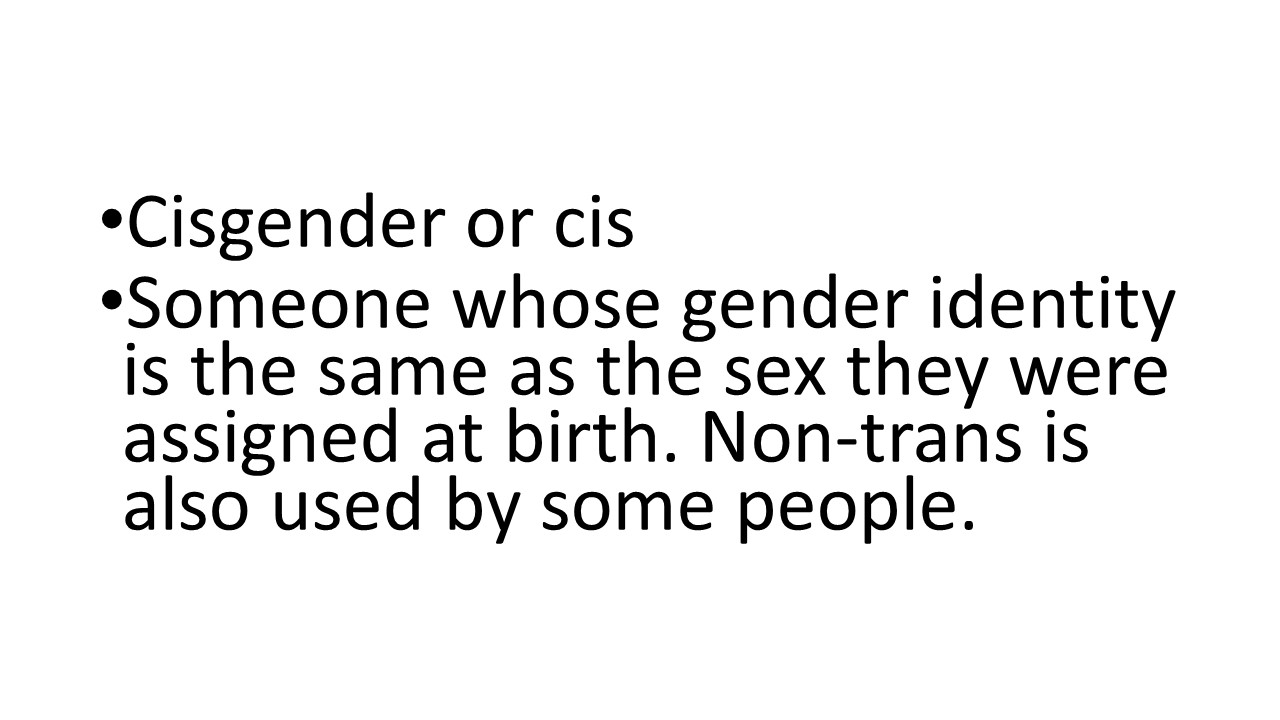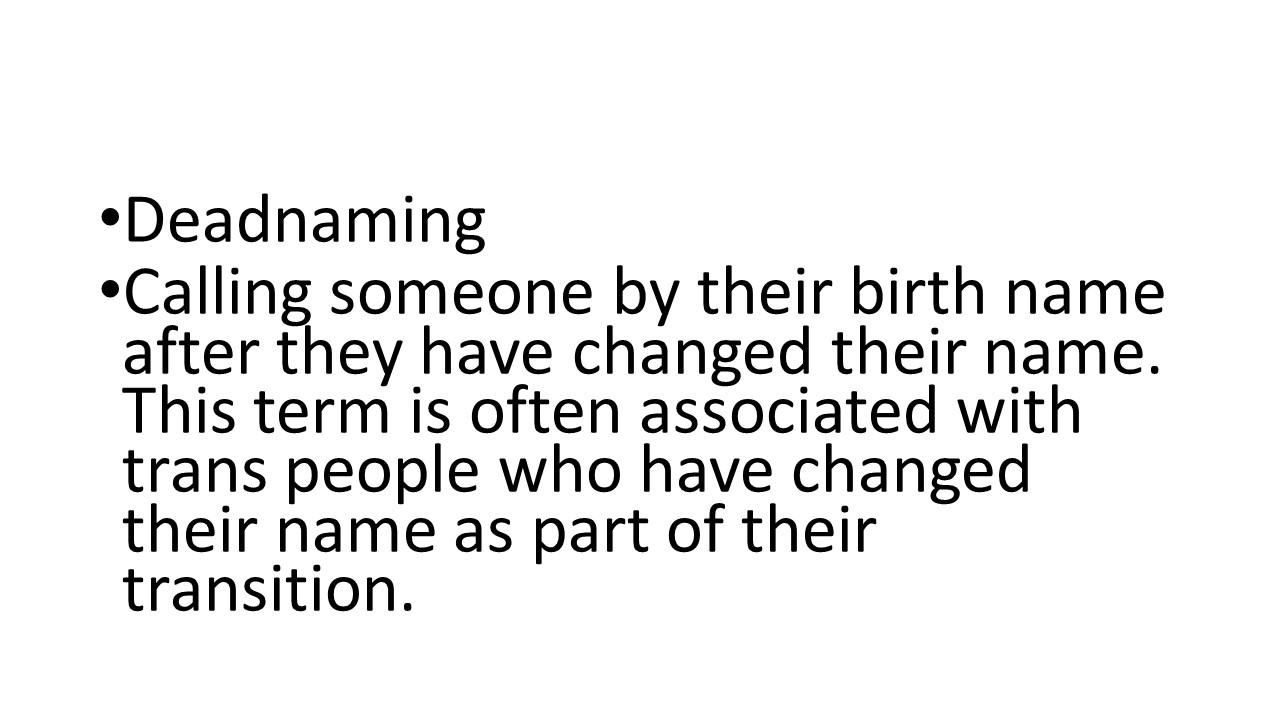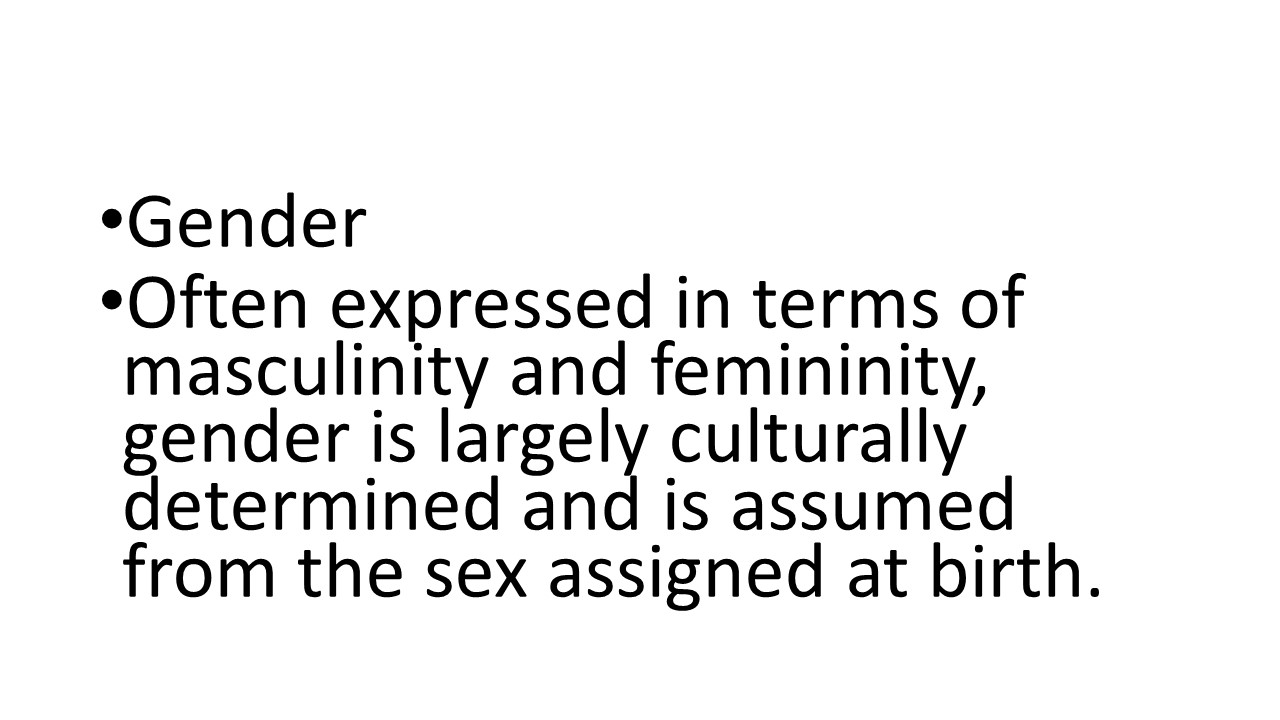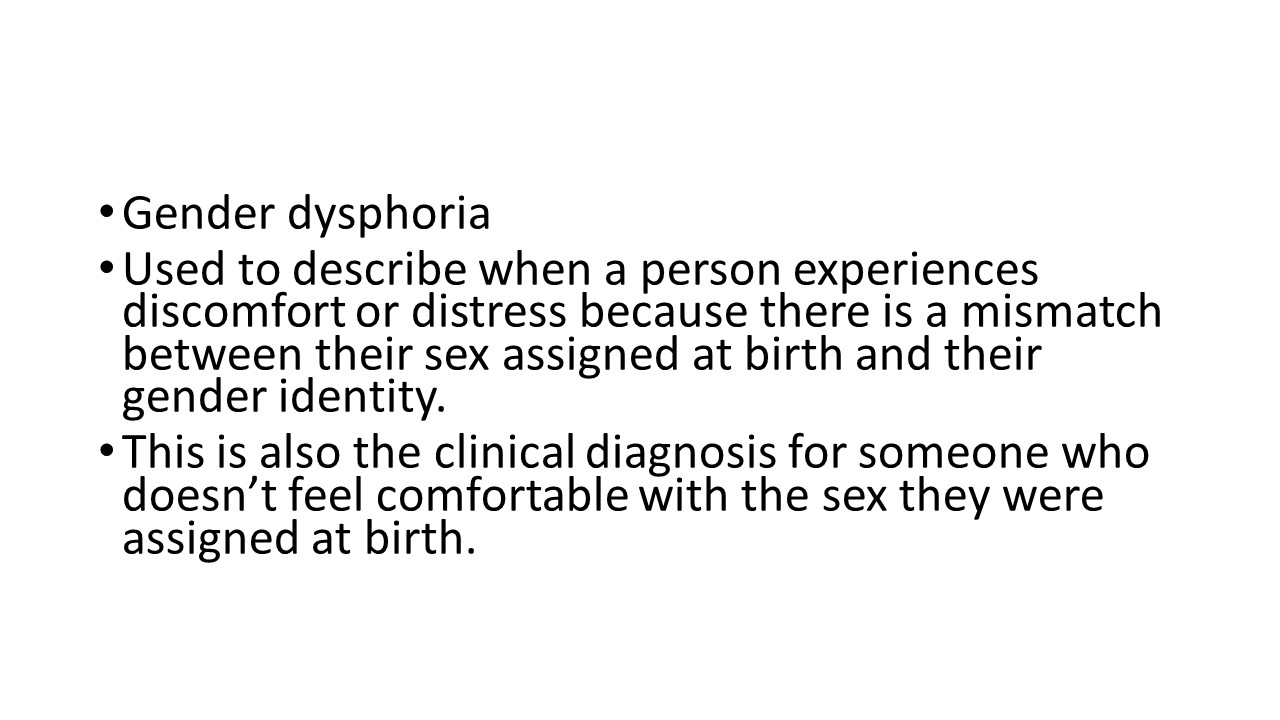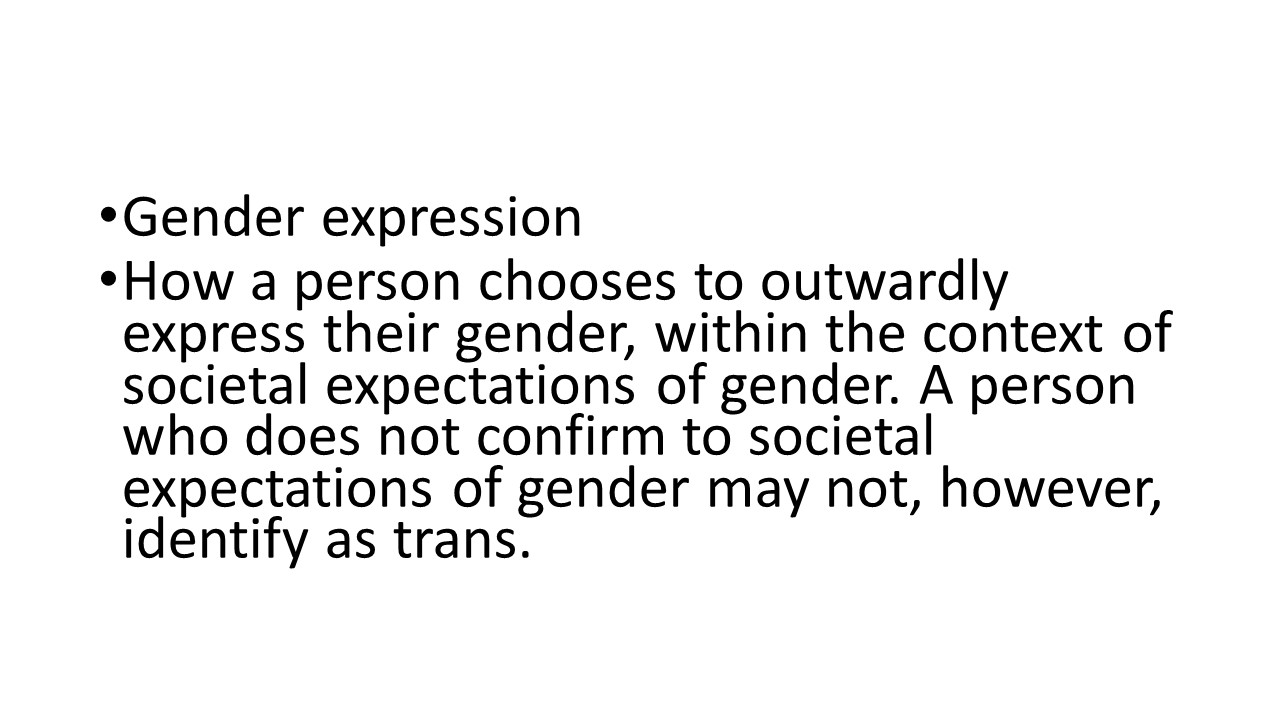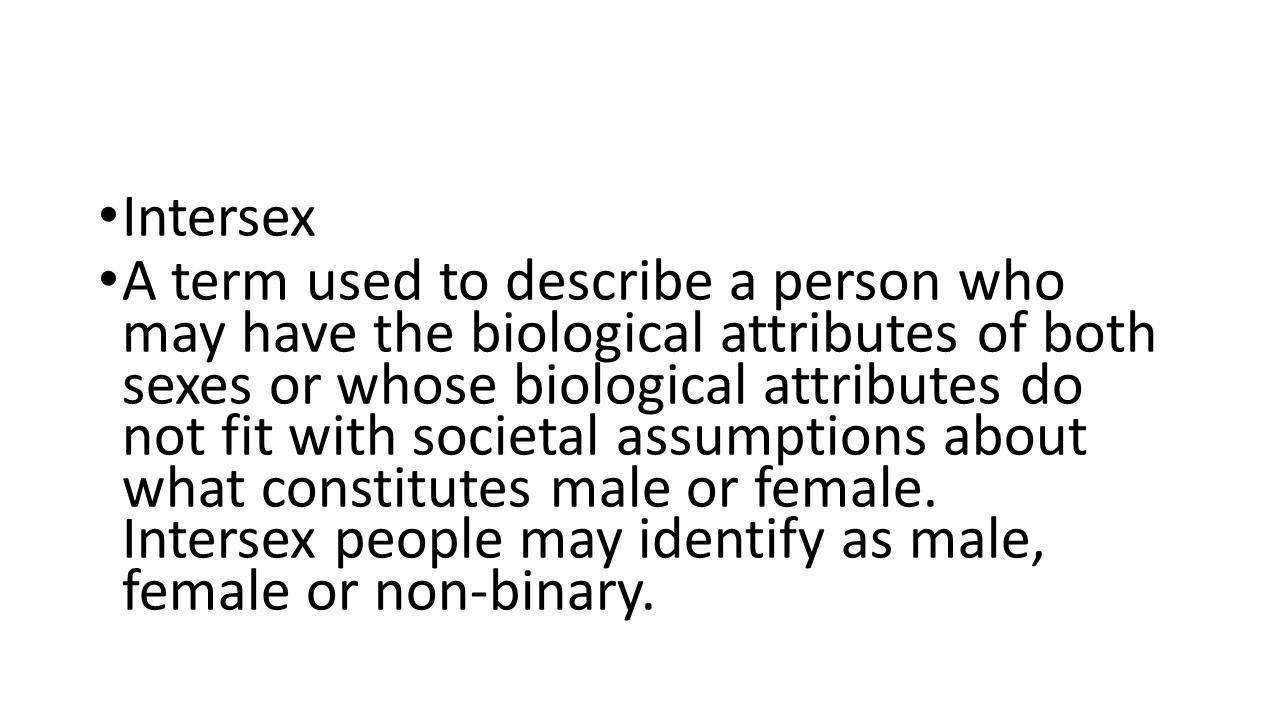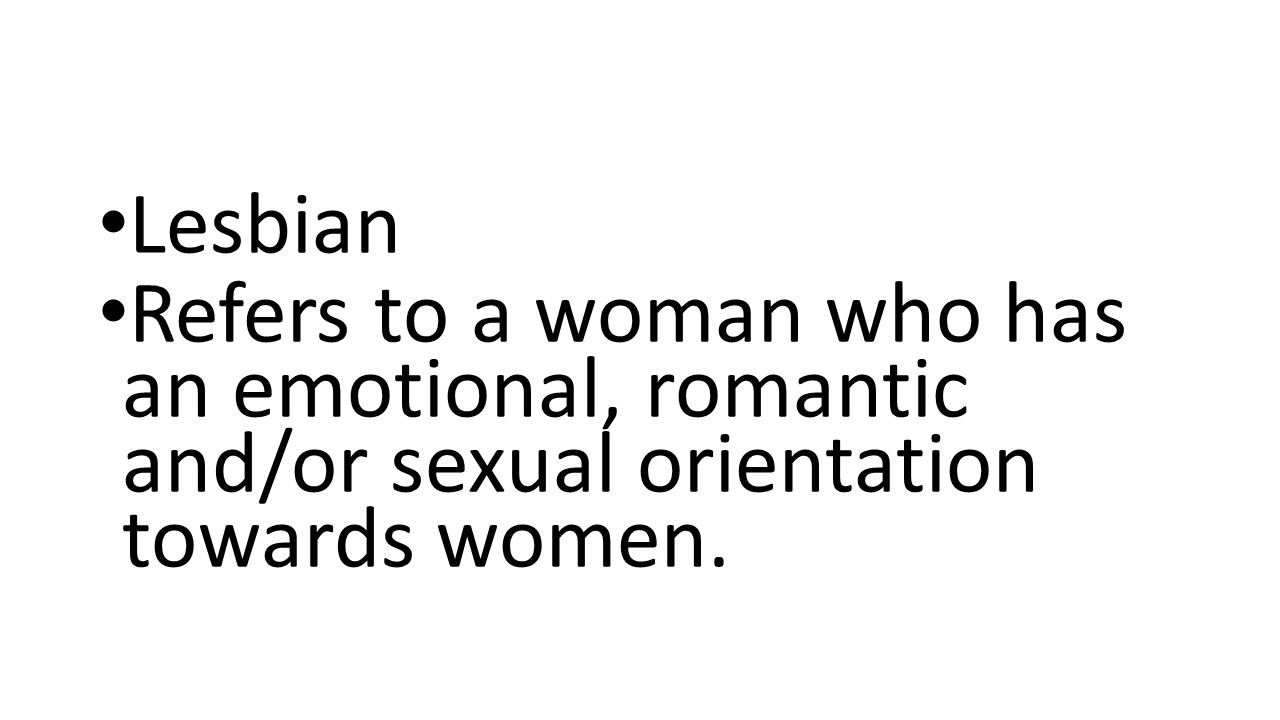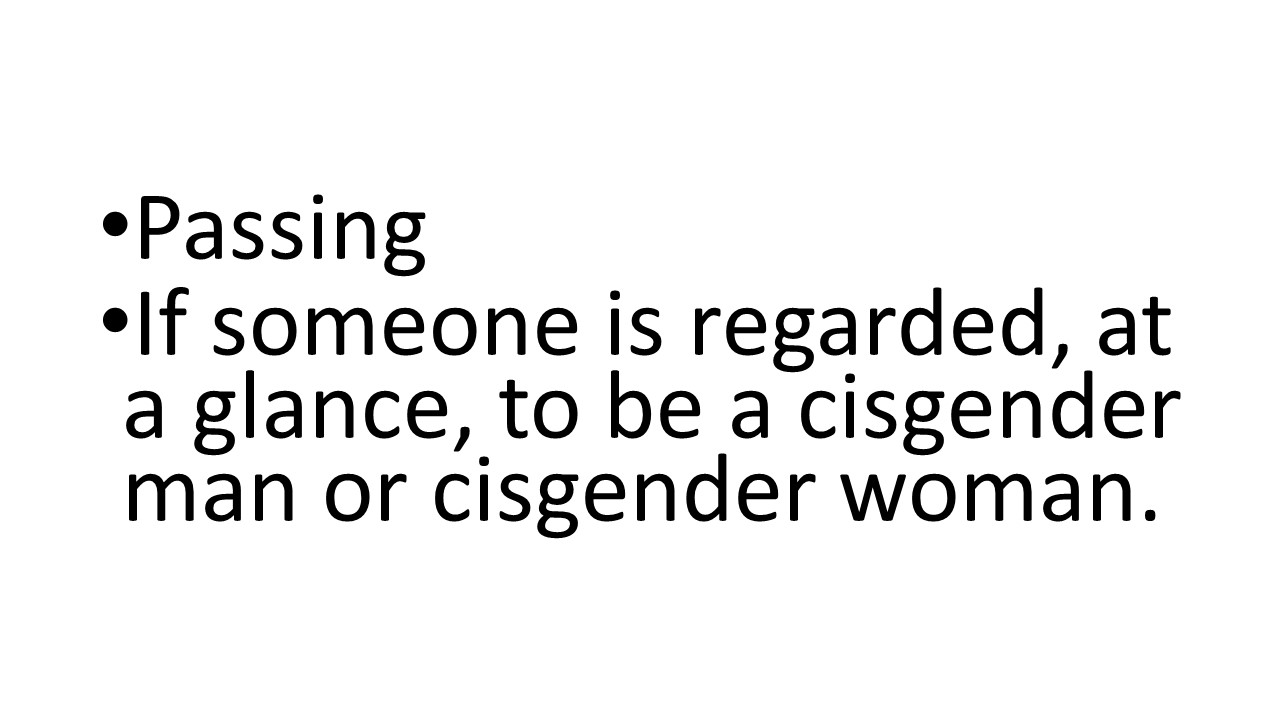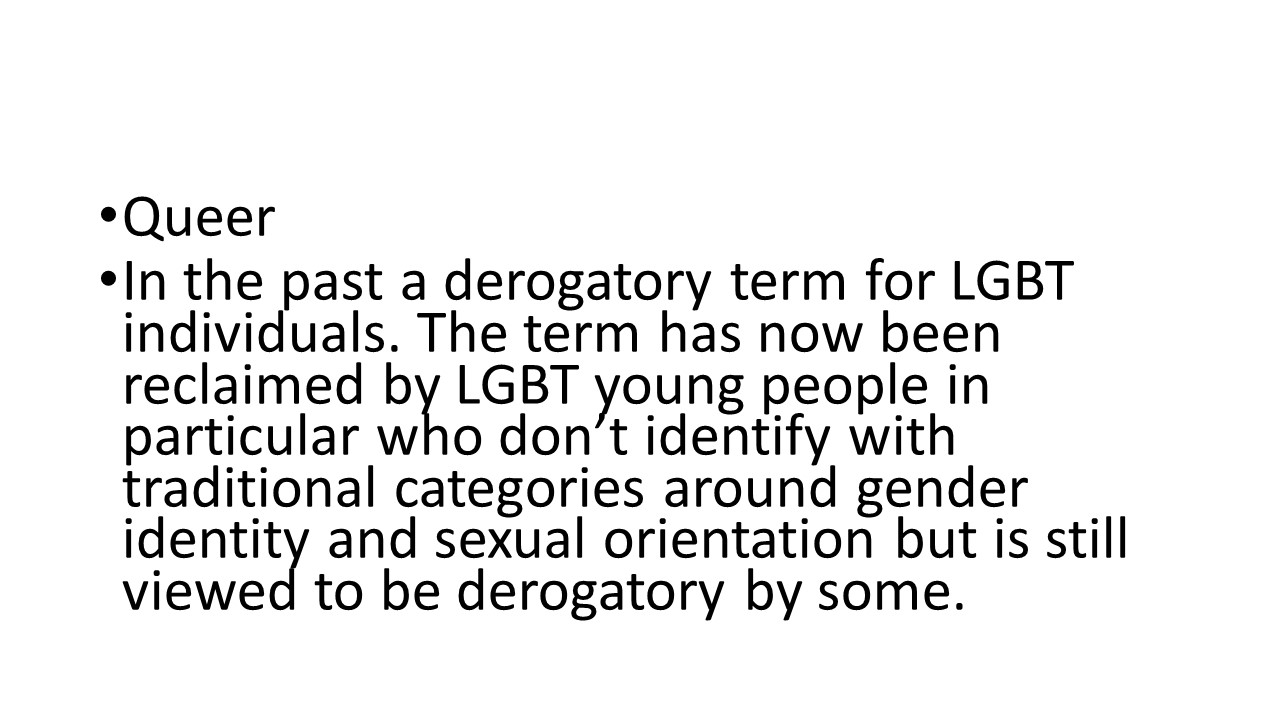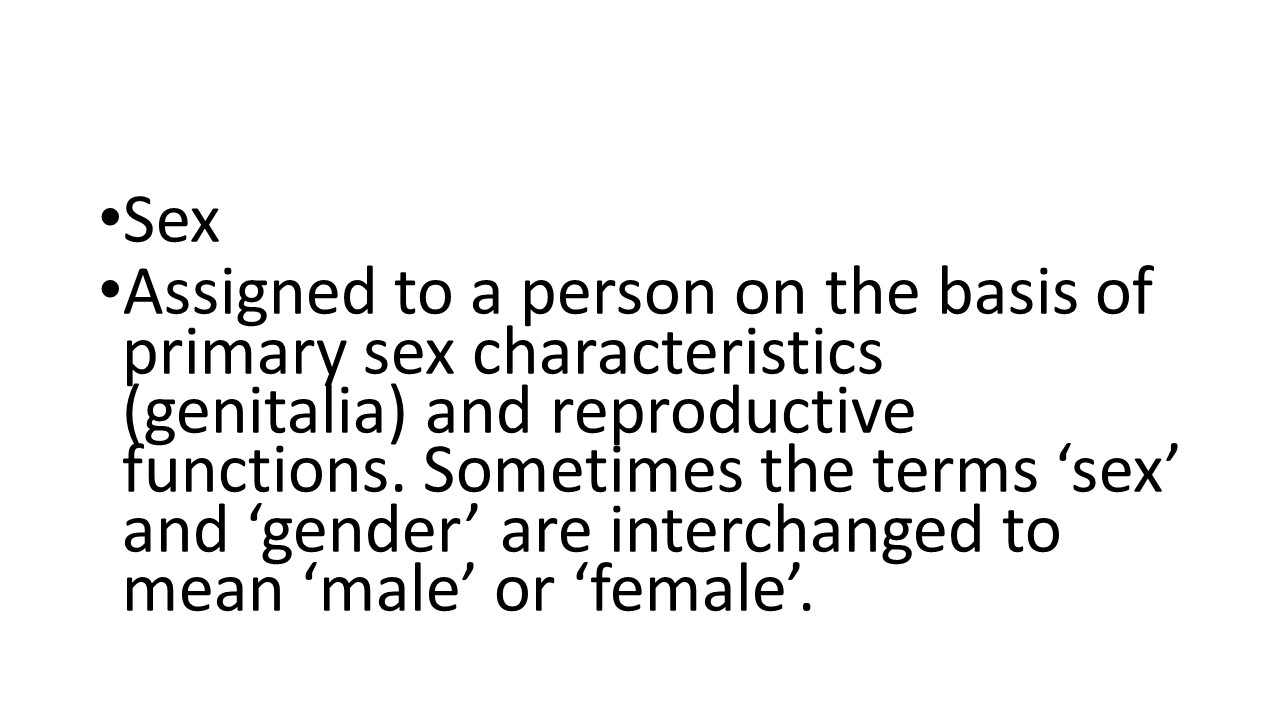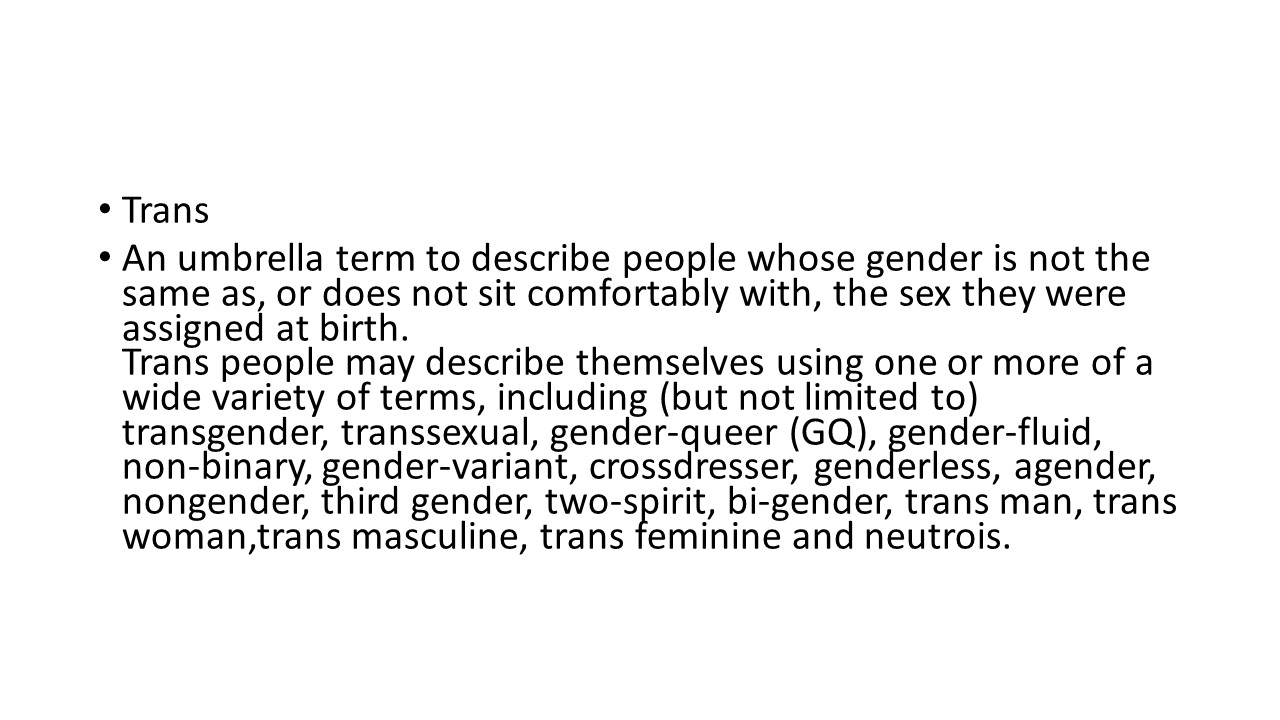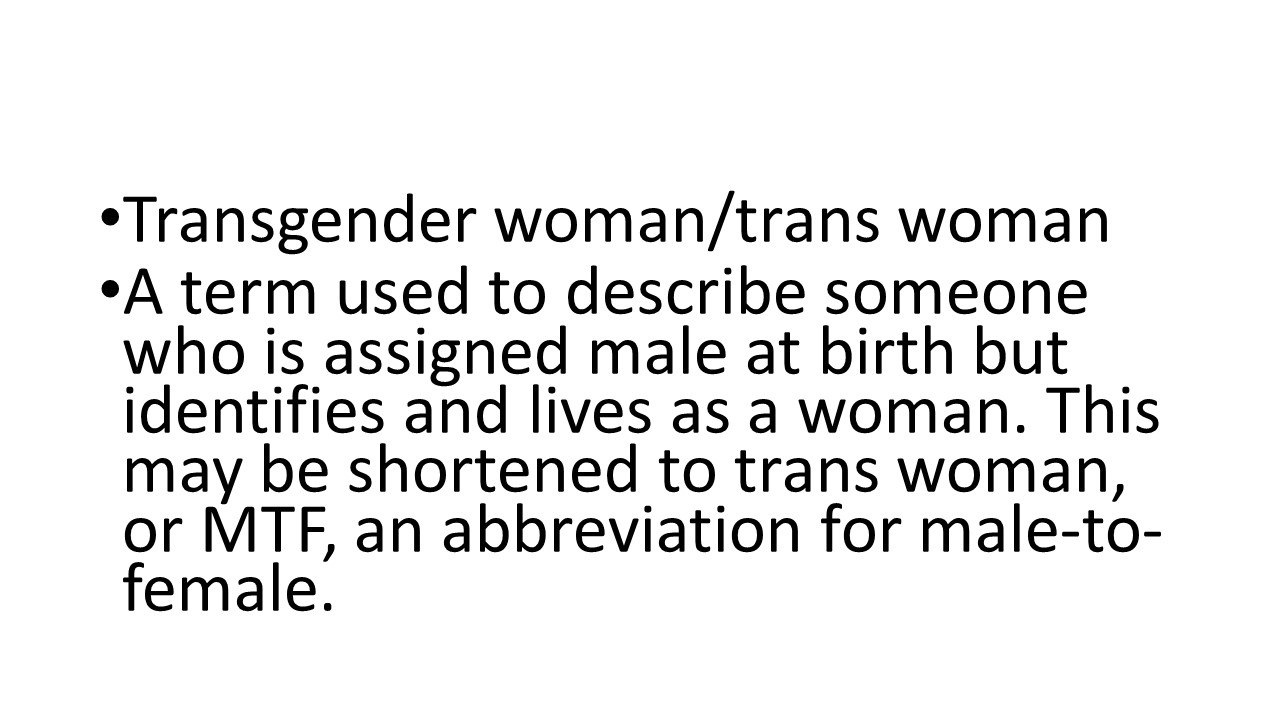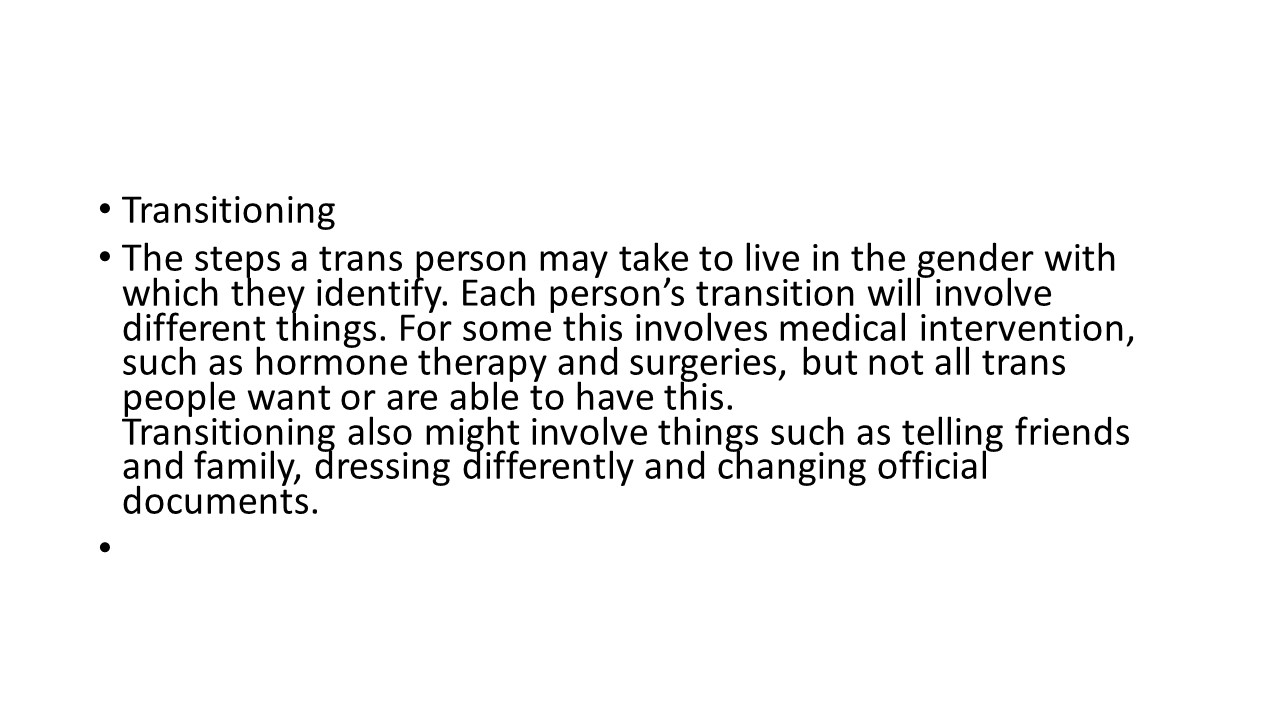This section contains PowerPoint presentations developed by different schools to use in staff training about LGBTQ+ issues. Terminology seems to be a particular concern for many staff, so this section contains examples of two different matching exercises, one which is relatively short and the other which covers a broader range of terminology.
LGBTQ+ staff training
LGBTQ+ and gender
LGBTQ+ terminology
LGBTQ+ terminology (with answers)
Terminology list
| Trans or transgender | This is when someone feels their gender is different from the gender they were assigned at birth. |
| Non-binary, gender fluid or gender queer | This means someone doesn’t identify as either male or female. They could identify as both, or neither. |
| Cisgender | This is when someone’s gender identity is the same as the gender they were assigned at birth. |
| Lesbian or gay | When girls are attracted to other girls. |
| Gay or homosexual | When boys are attracted to other boys. |
| Straight or heterosexual | When boys or girls are attracted to someone of the opposite sex. |
| Bisexual | When someone is attracted to people of both sexes. |
| Asexual (sometimes referred to as Ace) | When someone doesn’t feel sexually attracted to anyone. |
| Questioning | When someone feels unsure about their sexual orientation or gender identity. |
| Coming out | When a person first tells someone/others about their orientation and/or gender identity. |
| Dead naming | Calling someone by their birth name after they have changed their name. This term is often associated with trans people who have changed their name as part of their transition. |
| LGBTQ+ | The acronym for lesbian, gay, bi, trans, queer, questioning and ace. |
| Queer | A term used by those wanting to reject specific labels of romantic orientation, sexual orientation and/or gender identity. |
| Pansexuality | Sexual, romantic, or emotional attraction towards people regardless of their sex or gender identity. |












































































